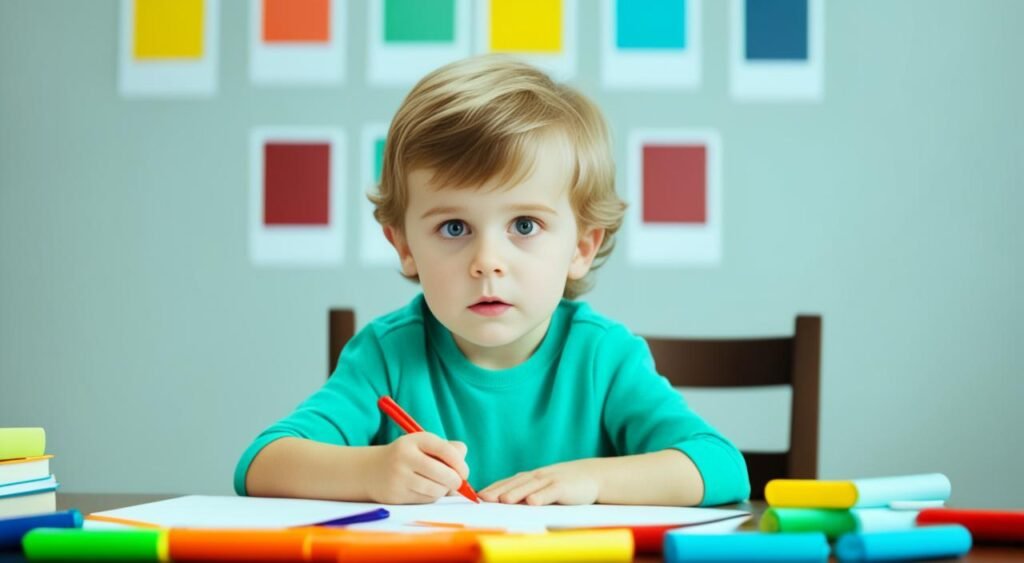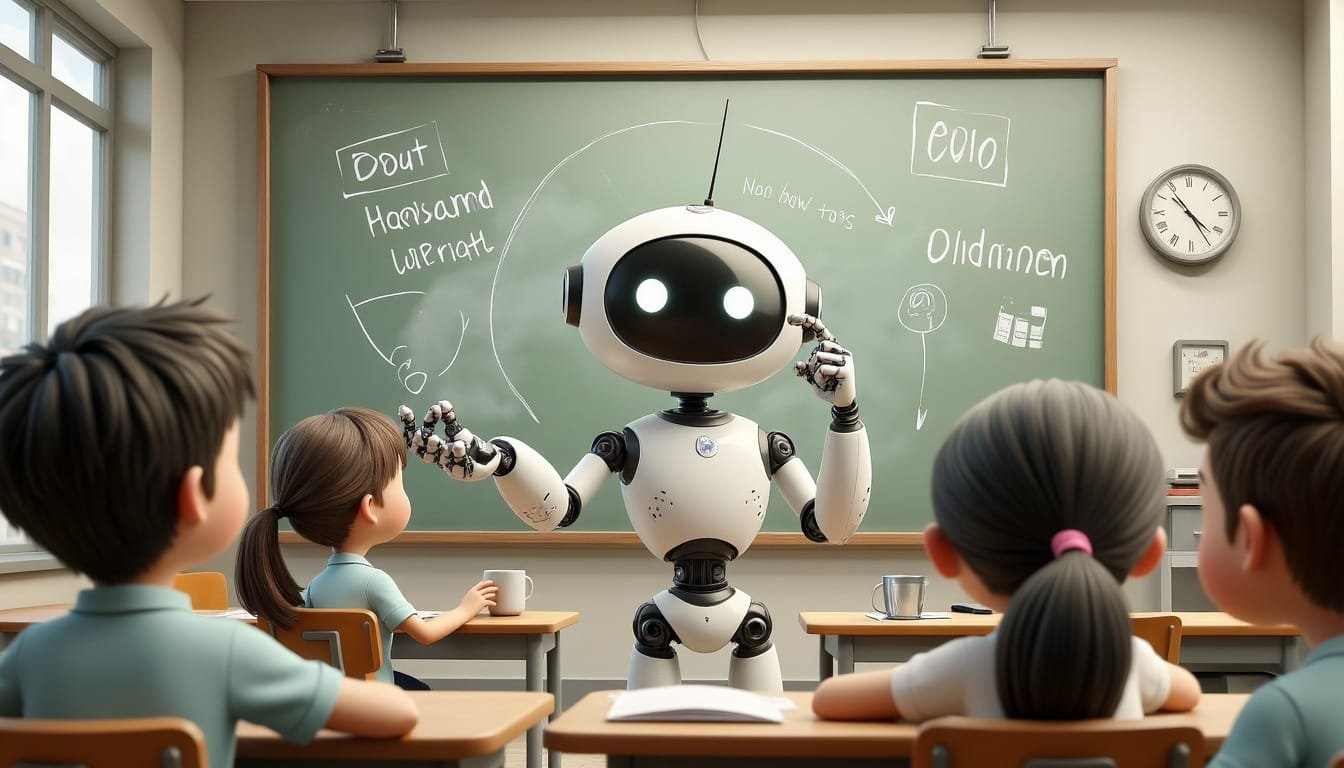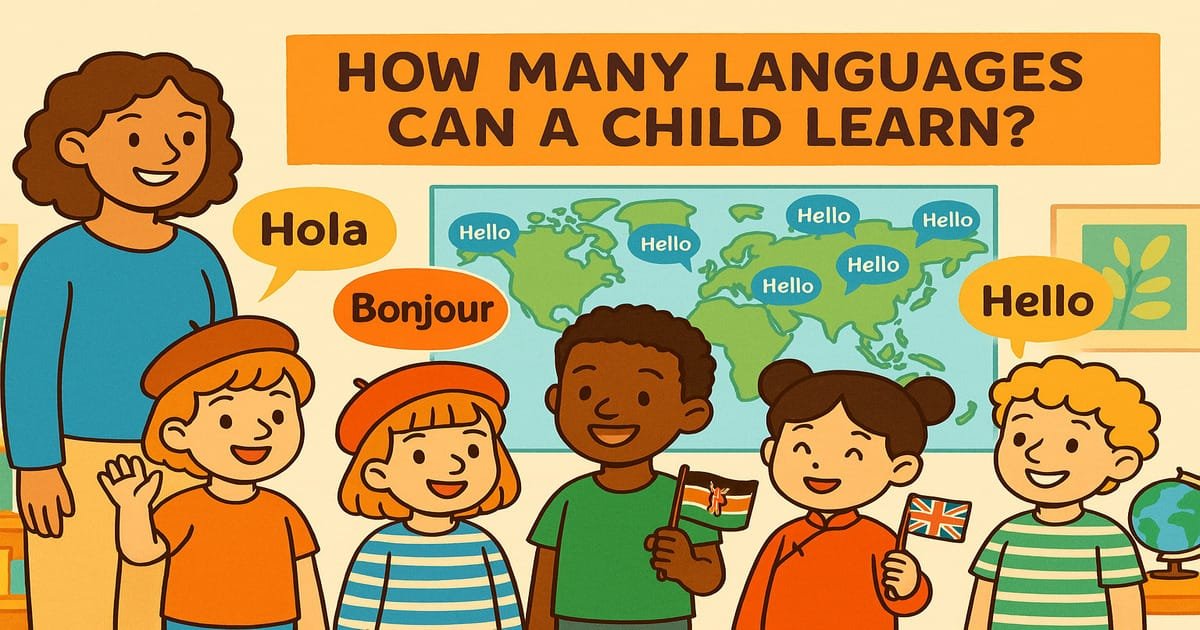When it comes to teaching children about the concept of “why,” it’s important to find ways to make it relatable and easy for them to grasp. Explaining the meaning of “why” to kids can help develop their critical thinking skills and logical reasoning abilities and encourage their curiosity about the world around them.
One effective approach is to break down the idea of “why” into different types of questions that children can understand. Start by asking them “why” questions about function, such as why we need certain objects or why we use certain things. By doing this, children can begin to understand that answering a “why” question often involves explaining the purpose or reason behind something.
As children become familiar with “why” questions about function, you can then introduce them to “why” questions about people’s motivations. This requires them to not only understand what “why” means but also consider why individuals act or behave in certain ways. Present them with scenarios or stories and ask them to explain someone’s motivation, encouraging them to think deeper and consider different perspectives.
To further develop their critical thinking skills, introduce hypothetical “why” questions that require more abstract thinking. These questions prompt children to come up with their own explanations for why things happen, encouraging them to think creatively and independently.
Throughout the process, engage children in conversation, ask open-ended questions, and give them space to think for themselves. Encouraging them to ask their own “why” questions and explore possible answers will help deepen their understanding and foster their natural curiosity.
Key Takeaways:
- Explaining “why” to kids can help develop their critical thinking skills and logical reasoning abilities.
- Break down the concept of “why” into different types of questions, starting with function-based questions.
- Introduce “why” questions about people’s motivations to help children understand the reasons behind actions and behaviors.
- Pose hypothetical “why” questions to encourage creative and independent thinking.
- Engage children in conversation, ask open-ended questions, and encourage them to ask their own “why” questions.
The Benefits of Explaining “Why” to Kids
Explaining “why” to kids has numerous benefits. It plays a crucial role in their cognitive and intellectual development, helping them develop critical thinking skills, problem-solving abilities, and a deeper understanding of the world around them.
When children are encouraged to explain “why,” it enables them to make connections between cause and effect. By understanding the reasons behind certain actions or events, they can develop their reasoning skills and think more independently.
Moreover, discussing “why” with children fosters their curiosity and encourages them to ask questions. This natural curiosity drives further exploration and learning as they seek answers and gain a broader understanding of different subjects.
Explaining “why” also has a positive impact on children’s language and communication skills. When articulating their thoughts and ideas, they develop the ability to express themselves effectively and engage in meaningful conversations.
Overall, explaining “why” to kids is a valuable tool for their cognitive and intellectual development. It empowers them to think critically, solve problems, and communicate their thoughts effectively. With each explanation, children gain a deeper understanding of the world around them and become more curious and engaged learners.
Strategies for Explaining “Why” to Kids
When it comes to explaining the concept of “why” to children, employing effective strategies can make all the difference in helping them grasp this fundamental concept. Here are some tips and techniques to clarify “why” for kids:
- Use age-appropriate language and relevant examples. Tailor your explanations to match the child’s age and cognitive abilities. Use simple, easy-to-understand language and provide examples that are meaningful and relevant to their daily lives.
- Utilize visual aids: Visual aids such as pictures or props can significantly enhance a child’s understanding of “why”. Use them to visually support your explanations and make abstract concepts more concrete and relatable.
- Break down complex concepts: Simplify complex ideas into smaller, manageable parts. Use relatable analogies or metaphors to explain abstract concepts, and gradually build upon their understanding step by step.
- Provide concrete examples: Offer real-life examples that illustrate the meaning of “why”. Show children how cause-and-effect relationships work by linking actions to their outcomes, helping them connect the dots and understand the reasons behind certain behaviors or events.
- Encourage exploration and discovery: Foster a sense of curiosity and critical thinking in children by encouraging them to ask their own “why” questions. Provide opportunities for independent exploration and discovery, allowing them to find answers and develop a deeper understanding on their own.
- Incorporate storytelling and role-playing: Engage children’s imagination and make learning fun by using storytelling or role-playing activities. Use narratives or scenarios that involve “why” questions to spark their interest and encourage them to think creatively.
- Be patient, supportive, and encouraging. Remember that learning takes time and that each child learns at their own pace. Be patient when answering their “why” questions, provide support when they struggle to understand, and always offer encouragement to foster their curiosity and love for learning.
By implementing these strategies, you can effectively teach children the meaning of “why” and help them develop a solid understanding of this essential aspect of their cognitive development.
Making Learning Fun: A Story to Illustrate the Concept of “Why”
Imagine a group of young explorers embarking on a thrilling jungle adventure. As they traverse through dense foliage and encounter different animals, they constantly ask themselves “why” questions. They wonder why monkeys swing from tree to tree or why tigers have stripes. Their curiosity fuels a desire to understand the natural world around them.
Through lively discussions, visual aids, and imaginative storytelling, their guide provides them with explanations, allowing them to uncover the answers to their “why” questions. With each answer, their understanding deepens, and their passion for learning grows.
The Role of Explaining in Children’s Learning
Explaining plays a crucial role in children’s learning and understanding. When children are encouraged to explain concepts or ideas, they are better able to connect new information with their prior knowledge. This process of self-explanation has a significant impact on children’s understanding and retention of learning material.
Research has shown that self-explanation, where children explain to themselves or others, is particularly effective in enhancing learning. It helps children develop a deeper understanding of cause-and-effect relationships, improve problem-solving skills, and transfer knowledge to new situations.
Self-explanation engages children in active thinking, encouraging them to analyze and articulate their thoughts. Through this process, children are able to identify gaps in their understanding and make sense of new information. It promotes critical thinking and empowers children to become independent learners.
“Self-explanation is the key to unlocking children’s potential. By encouraging them to explain ‘why’, we are fostering their cognitive development and setting them up for success in their educational journey.”
Self-explanation also plays a crucial role in early childhood. It allows children to develop essential cognitive skills and lays the foundation for future learning. By fostering self-explanation from an early age, we are equipping children with the tools they need to absorb and master new information throughout their academic lives.
Encouraging children to explain ‘why’ not only aids their understanding of specific concepts but also cultivates a mindset of curiosity and inquiry. It instills a sense of wonder and a thirst for knowledge, paving the way for a lifelong love of learning.
The Benefits of Self-Explanation:
- Improved understanding of cause-and-effect relationships
- Enhanced problem-solving skills
- Greater ability to transfer knowledge to new situations
- Promotion of critical thinking and independent learning
- Identification of gaps in understanding
- Strengthened cognitive development
- Fostering of curiosity and a love of learning
| Benefits of Self-Explanation | Description |
|---|---|
| Improved Understanding | Self-explanation helps children make connections between cause and effect, leading to a deeper understanding of concepts. |
| Enhanced Problem-Solving | By engaging in self-explanation, children develop critical thinking and problem-solving skills, enabling them to tackle challenges more effectively. |
| Transfer of Knowledge | Self-explanation allows children to apply their knowledge to new situations, fostering a flexible and adaptable mindset. |
| Promotion of Critical Thinking | Through self-explanation, children learn to analyze information, evaluate evidence, and think critically, skills that are vital for academic success. |
| Identification of Gaps | Self-explanation helps children identify areas where their understanding may be incomplete, allowing them to seek clarification and deepen their comprehension. |
| Strengthened Cognitive Development | Engaging in self-explanation exercises strengthens children’s cognitive abilities and overall intellectual growth. |
| Fostering Curiosity and Love of Learning | By encouraging self-explanation, we nurture children’s inherent curiosity, fostering a lifelong love of learning. |
Encouraging Self-Explanation in Children’s Learning

Encouraging self-explanation in children’s learning is essential for their cognitive development and intellectual growth. By providing them with the tools and strategies to foster self-explanation skills, we empower children to take ownership of their learning journey and develop a deeper understanding of the concepts they are exploring.
One effective approach to promoting self-explanation is to ask children to explain what they are learning in their own words. This simple yet powerful technique helps them consolidate their understanding and make meaningful connections between new information and prior knowledge. Encourage children to express their thoughts and ideas, allowing them to articulate their understanding in a way that is meaningful to them.
Engaging children in dialogue and discussion is another effective strategy. Provide opportunities for them to explain their thoughts and ideas to others, fostering collaboration and peer learning. This not only helps them refine their own understanding but also exposes them to different perspectives and insights, further enhancing their learning experience.
Asking open-ended questions is a powerful tool to encourage self-explanation. Prompt children to provide explanations or reasons for their answers, challenging them to think critically and dive deeper into their understanding. This promotes analytical thinking and helps children develop their reasoning abilities.
When children engage in self-explanation, they actively participate in sense-making and knowledge construction, fostering a deeper understanding of the subject matter. Encouraging self-explanation in children’s learning is a valuable strategy to promote independent thinking and enhance their overall learning experience.
Providing feedback and support is crucial in the process of self-explanation. Offer guidance and constructive feedback, allowing children to reflect on their explanations and make revisions if necessary. This helps them refine their understanding and build on their existing knowledge, fostering continuous growth and improvement.
By integrating self-explanation strategies into children’s learning experiences, we equip them with the skills and mindset necessary for lifelong learning. Encouraging self-explanation promotes critical thinking, problem-solving abilities, and a deeper understanding of the world around them.
Self-Explanation Strategies in Children’s Learning
Below is a table summarizing effective strategies to encourage self-explanation in children’s learning:
| Strategy | Description |
|---|---|
| Asking children to explain in their own words | Promotes consolidation of understanding and connections between new information and prior knowledge |
| Engaging in dialogue and discussion | Fosters collaboration, peer learning, and exposure to different perspectives |
| Asking open-ended questions | Prompts critical thinking and encourages children to dive deeper into their understanding |
| Providing feedback and support | Guides reflection, revision, and continuous growth in understanding |
By implementing these strategies, we can nurture self-explanation skills in children, empowering them to become independent learners and confident thinkers.
Conclusion
Explaining “why” to children is an essential part of their cognitive and intellectual development. By breaking down the concept of “why” into different types of questions and engaging children in conversation, we can help them develop problem-solving skills, reasoning abilities, and a deeper understanding of the world around them. Through these conversations, we encourage children to think critically and explore their curiosity.
Moreover, promoting self-explanation in children’s learning empowers them to become independent thinkers and lifelong learners. By encouraging children to explain their thoughts and ideas in their own words, we provide them with the tools to consolidate their understanding and make connections between new information and prior knowledge. This approach fosters their curiosity, encourages them to ask questions, and enables them to develop a deeper understanding of the concepts they are exploring.
So, the next time a child asks “why”, seize the opportunity to engage them in a conversation and encourage their curiosity. With the right guidance and support, we can help children unlock the secrets of the “why” and foster their love for learning. By explaining “why” to children and promoting self-explanation, we nurture their cognitive growth, critical thinking skills, and intellectual development.
FAQ
How can I explain the concept of “why” to a child?
When explaining the concept of “why” to children, it’s important to break it down into different types of questions to make it easier for them to understand. Start with “why” questions about function, where you ask why we need or use certain objects. For example, ask a child why they would use a flashlight or a jacket. Explain that when we answer a “why” question, we can start our answer with “because.”. Once children grasp the idea of “why” questions about function, you can move on to “why” questions about people’s motivations.
This type of question requires children to understand not only what “why” means but also people’s reasons for their actions. Provide them with scenarios or stories, and ask them to explain someone’s motivation. Finally, you can introduce hypothetical “why” questions that require more abstract thinking. These questions encourage children to think critically and come up with their own explanations for why things happen. Throughout the process, it’s important to engage children in conversation, ask open-ended questions, and encourage them to think for themselves.
What are the benefits of explaining “why” to kids?
Explaining “why” to kids has numerous benefits. It allows them to develop critical thinking skills, problem-solving abilities, and a deeper understanding of the world around them. When children are encouraged to explain “why,” it helps them make connections between cause and effect, develop reasoning skills, and think more independently.
Additionally, discussing “why” with children fosters their curiosity and encourages them to ask questions, which leads to further exploration and learning. It also helps children develop language and communication skills as they articulate their thoughts and ideas. Overall, explaining “why” to kids is a valuable tool for their cognitive and intellectual development.
What strategies can I use to explain “why” to kids?
When explaining “why” to children, there are several strategies you can use to make it easier for them to understand. Start by using age-appropriate language and examples that are relevant to their lives. Use visual aids, such as pictures or props, to support their understanding.
Break down complex concepts into simpler terms and provide concrete examples to illustrate the meaning of “why.”. Encourage children to ask their own “why” questions and provide opportunities for them to explore and discover answers on their own. Use storytelling or role-playing to engage their imagination and make learning fun. And most importantly, be patient, supportive, and encouraging throughout the process.
What role does explaining play in children’s learning?
Explaining plays a crucial role in children’s learning and understanding. Research has shown that when children are encouraged to explain concepts or ideas, they are better able to connect new information with their prior knowledge. Self-explanation, where children explain to themselves or others, has been found to be particularly effective in enhancing learning.
It helps children develop a deeper understanding of cause-and-effect relationships, improve problem-solving skills, and transfer knowledge to new situations. Self-explanation engages children in active thinking and promotes critical thinking. It also allows children to identify gaps in their understanding and make sense of new information. By encouraging children to explain “why,” we are fostering their cognitive development and helping them become independent learners.
How can I encourage self-explanation in children’s learning?
There are several ways to encourage self-explanation in children’s learning. One approach is to ask children to explain what they are learning in their own words. This helps them consolidate their understanding and make connections between new information and prior knowledge. Provide opportunities for children to engage in dialogue and discussion, where they can explain their thoughts and ideas to others.
Encourage them to ask questions, explore different perspectives, and think critically. Use open-ended prompts and ask them to provide explanations or reasons for their answers. Provide feedback and support, allowing children to reflect on their explanations and make revisions if necessary. By promoting self-explanation, we are empowering children to take ownership of their learning and develop a deeper understanding of the concepts they are exploring.
What is the importance of explaining “why” to children?
Explaining “why” to children is an important aspect of their cognitive and intellectual development. By breaking down the concept of “why” into different types of questions, engaging children in conversation, and encouraging them to think critically, we can help them develop problem-solving skills, reasoning abilities, and a deeper understanding of the world around them.
By promoting self-explanation in children’s learning, we empower them to become independent thinkers and lifelong learners. So the next time a child asks “why,” seize the opportunity to engage them in conversation and encourage their curiosity. With the right guidance and support, we can help children unlock the secrets of “why” and foster their love for learning.





